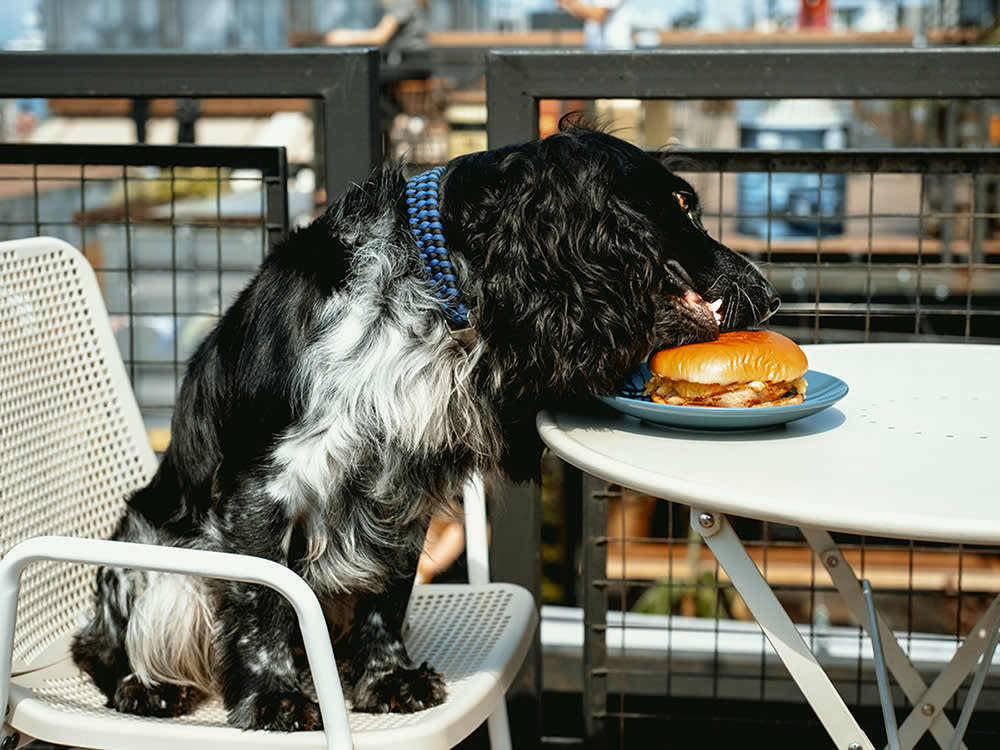Homemade Dog Food Recipe: Turkey Burgers
Putting homemade dog foods to the test
For about a year, I’ve been supplementing our dogs’ quality kibble with homemade turkey burgers (along with whole-wheat pasta and cooked vegetables). Our three dogs eat twice a day; at each meal, our largest dog (45 pounds) gets half a burger, while the two smaller ones (30 and 25 pounds) roughly share the other half.
I developed the recipe myself, and while I tried to cover the bases in terms of appropriate canine nutrition, I had no particular agenda in mind—I mostly just wanted to make our dogs’ meals a little more interesting for them. Curious about the burgers’ nutritional value, I turned to Roschelle Heuberger, PhD, RD, professor at Central Michigan University and devoted Akita person, to find out how my culinary experiment stacked up.
Trick question: All dogs are perfect! But find out which type is the best fit for you.
How much do you spend on your pet per year?
The Analysis
By Roschelle Heuberger, PhD, RD
There is much controversy within the veterinary nutritionist community about commercial pet food and home cooking. And, since manufacturing standards for canine food are so much different than those we apply in our own kitchens, it’s difficult to make an “apples-to-apples” comparison. Nonetheless, using proprietary nutrition software, it’s possible to determine the relative values of the major food components of Claudia’s recipe with those found in commercially produced dog food (in parens).
Analysis (per patty)
Note: All measurements are given in terms of 100 kilocalories (kcals) against measurement standards used by commercial food manufacturers.
Protein: 7.5 grams (8 grams is considered high protein)
Calories: 5.3 kcals (5 or more kcals is considered high calorie)
Fat: 2 grams (a low-fat food contains less than 2 grams, so this is neither high nor low)
Sodium: 30 mg (anything less than 100 mg per serving is considered low-sodium)
Fiber: 0.75 grams (neither high nor low)
Moisture loss with one hour covered cooking time is approximately 10 to 15 percent. High heat and long cooking time will destroy 90 percent of the thiamin and up to 50 percent of some of the other B vitamins in the burgers. On the bright side, it will also kill pathogens, so you don’t have to worry about the contamination that’s a concern when it comes to undercooked meats.
The Verdict
Used as a “topper” to both to increase palatability and provide calories, protein and other nutrients, the turkey burger is a great addition to a complete commercial dog food. Feeding turkey burgers as toppers may also be helpful for older dogs, who often have poor appetites, or dogs who have been ill or malnourished. In those cases, the turkey burger need not replace the commercial food, but rather, could be fed in addition to it.
As the recipe is given, it would not be advisable to feed turkey burgers as the sole source of nutrition because they may be too high-calorie for some dogs, and also because they’re missing some of the other nutrients dogs need. Obesity is becoming an epidemic among dogs, as it is in humans. Caloric restriction and regular exercise are important for weight maintenance, particularly as a dog ages.
As always, choose the best commercial food you can afford. To educate yourself on the options and issues, try out one of the online dog food evaluators; Dogfoodadvisor.comopens in new tab is a good place to start.
The Background: Canine Nutrition
Dogs, who are omnivorous, require the same sorts of major nutrients—proteins, carbohydrates and fats, and vitamins and minerals—as human omnivores, but in different ratios. For example, they have an absolute requirement for linoleic acid, an essential fatty acid, and for nearly a dozen amino acids, the building blocks of protein. These amino acids range from the complex (arginine and phenylalanine) to simple (leucine and valine).
We and our four-legged companions get all 22 amino acids from protein sources such as eggs or meats, which contain varying percentages of each one. Some protein sources contain most of them, others only a fraction. Meats, eggs and fish are among the best sources of complete amino acids, and their proteins are highly digestible; this means that the amino acids are absorbed more readily from the gut.
Standards for minimal nutritional composition of food for dogs are based on percentages, which are determined by a dog’s physiological status; the percentages are higher for dogs during growth, reproduction and lactation stages, and increase as the weight of the animal increases. Usually, the amount fed to achieve the minimal percentages required for maintenance of normal physiological function in the dog is based on dry matter per kilogram of body weight. That is why labels that show the number of cups of food to be fed per day base the measurement on the size of the dog. Companies formulate their foods to provide a specific amount of protein, linoleic acid, and calcium-to-phosphorus ratio.
If you’re cooking for your dog and want to do your own analysis, a number of websites allow you to do that, but none can be considered foolproof. For example, there’s the USDA Nutrient Databaseopens in new tab. This is a food calculator only, and doesn’t contain information on ingredients that one might use in a dog-food recipe, such as eggshells (a free web calculator that includes eggshells can be found here: nutritiondata.self.comopens in new tab).
Resources
Baldwin, Kimberly, et al. 2010. AAHA Nutritional Assessment Guidelines for Dogs and Cats. JAVMA 46 (4): 285–291.
Butterwisk, Richard. Waltham Pet Research Center Pocket Book of Essential Nutrition for Cats and Dogsopens in new tab.
Dzanis, David. Selecting Nutritious Pet Foodsopens in new tab.
Freeman, Lisa, et al. 2013. Current knowledge about the risks and benefits of raw-meat-based diets for dogs and cats. JAVMA 243 (11): 1549–1558.
Stockman, Jonathan, et al. 2013. Evaluation of recipes of home-prepared maintenance diets for dogs. JAVMA 242 (11): 1500–1505.


